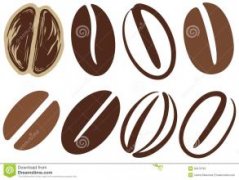Crema Roberta Coffee in Coffee degree of extraction evenness of extraction Italian concentration
Crema can at least tell us the following information:
1. Whether the coffee is fresh or not: a large number of Robosta beans allow us to see a lot of foam, so we can't judge the freshness of coffee by watching the speed at which the foam disappears. Fresh coffee will appear to be very crema throughout the production process (that is, when the coffee comes out, it looks like Coke spurting out), and only when a large amount of water appears, it will stop, thus dividing into two very obvious stages. Old coffee will often see a thin, separate foam in the process of ejection. The resulting coffee is often thin and watery, which means less crema and disappears faster.
2. The degree of coffee extraction: the darker the Crema, the more dissolved matter enters the cup.
3. The uniformity of coffee extraction: the more stable the Crema, the better and stronger the coffee we make, which means that there are fewer gaps in the coffee powder and fewer mistakes in the production process.
What Crema can't tell us:
1. Whether the coffee is good or not: as long as it is fresh enough, no matter how bad the beans are, no matter how bad the roast can produce rich crema.
2. The oil in coffee is properly emulsified: for a long time, many people, including I thought, Crema told us the degree of quenching of oil in coffee, but the theory tells us that more oil, less foam. If you try making espresso with 5-6bar pressure, you will find that you can still make a lot of crema, but the coffee tastes very insipid because of lack of oil and aroma.
Crema, it's not complicated at all.
The production of Espresso and crema is often artificially complicated by some baristas, far more than is needed in practice. In fact, Crema is a very simple part of the whole espresso production process.
If you are new, if you have never been in contact with Espresso or Crema. Then I will tell you sincerely: you only need to understand and remember the following:
Espresso has three main elements, one is water, the second is oily, and the third is foam. While the espresso body is gelatinous (the legendary soy sauce paste), the oil in the coffee is emulsified by hot water at high temperature and high pressure to form a colloid, which is extremely stable. The foam on the surface of espresso disappears very quickly compared to the colloid.
After eliminating the mysterious halo shrouded in Crema, Crema is still a great pleasure of espresso. Its honeycomb structure stores a lot of aromatic substances, releases a large amount of fragrance when the structure disintegrates, and brings pleasant enjoyment to our vision and smell at the same time.

Important Notice :
前街咖啡 FrontStreet Coffee has moved to new addredd:
FrontStreet Coffee Address: 315,Donghua East Road,GuangZhou
Tel:020 38364473
- Prev

Espresso style and flavor Italian blend coffee bean brownish red oil Espresso
Espresso, English meaning: coffee brewed quickly for you, also known as espresso or espresso. A small cup of coffee dominates coffee drinking habits all over the world. It can become the latte, cappuccino, mocha, macchiato and so on we often drink. At present, there are more than 10, 000 kinds of Italian fancy coffee recorded, so Espresso is popular in the world.
- Next

Roasting defects Fast baking freshly baked coffee beans coffee quality coffee raw beans
When we talk about boutique coffee, every step presented in the coffee supply chain is critical to the final coffee product presented to us. So a very important step in the supply chain of coffee from seed to cup is roasting. When it comes to specialty coffee, every step in the supply chain becomes extremel
Related
- Beginners will see the "Coffee pull flower" guide!
- What is the difference between ice blog purified milk and ordinary milk coffee?
- Why is the Philippines the largest producer of crops in Liberia?
- For coffee extraction, should the fine powder be retained?
- How does extracted espresso fill pressed powder? How much strength does it take to press the powder?
- How to make jasmine cold extract coffee? Is the jasmine + latte good?
- Will this little toy really make the coffee taste better? How does Lily Drip affect coffee extraction?
- Will the action of slapping the filter cup also affect coffee extraction?
- What's the difference between powder-to-water ratio and powder-to-liquid ratio?
- What is the Ethiopian local species? What does it have to do with Heirloom native species?

